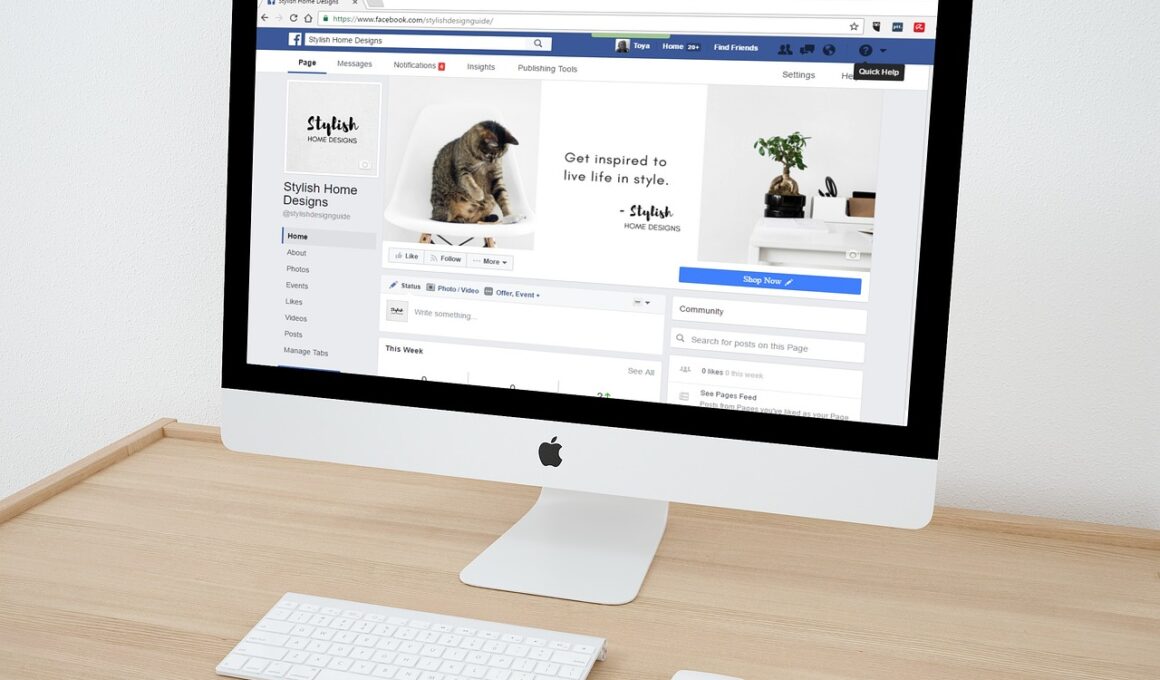Personalization Techniques for Facebook Retargeting Ads
In the realm of digital marketing, personalization is crucial, especially when it comes to Facebook retargeting ads. Personalization refers to creating tailored experiences for users based on their behaviors and preferences. This technique enhances user engagement, increases conversion rates, and ultimately leads to higher ROI. By analyzing user data gathered from various interactions, advertisers can segment audiences into distinct groups. Each group can receive specific ads that resonate with their interests. Furthermore, utilizing dynamic ads gives marketers the ability to show products that users have previously interacted with, making the ads even more relevant. The seamless integration of product catalogs with retargeting ads allows businesses to automatically update any changes. For instance, if a product goes out of stock, it can be removed from the list immediately, preventing customer disappointment. To optimize retargeting strategies, using tools like Facebook Pixel to track user actions becomes essential. This ensures that the right audience is continually targeted based on their interaction history. Through the strategic use of personalization, businesses can effectively draw back potential customers who may otherwise have been lost, reinforcing brand loyalty along the way.
Another crucial aspect of personalization techniques in Facebook retargeting involves segmentation strategies. Advertisers need to categorize their audience based on various criteria like age, location, interests, and previous interactions with the brand. This targeted approach allows advertisers to design specific messaging for each segment, thereby increasing the relevancy of the ads. For example, if a segment includes users who browsed sports equipment, the ads can showcase related products or offers specific to sports enthusiasts. Tools like Facebook Audience Insights can help marketers analyze data effectively and develop better-targeted campaigns. Also, retargeting ads can remind users of items they previously viewed, creating a sense of urgency and prompting them to complete their purchase. Another effective technique is using A/B testing, where two versions of an ad are shown to different audience segments. This allows marketers to assess which variation performs best and refine their strategies accordingly. By continuously optimizing and adapting based on performance metrics, brands can enhance their retargeting efforts. This results in more effective ad spend and, ultimately, improved conversion rates. In this rapidly evolving digital landscape, personalization is no longer optional but a necessity.
The Role of Creative Content
An essential component of effective Facebook retargeting ads is the role of creative content. The visual elements and copy used in the ads significantly influence user engagement. Compelling images and persuasive language grab attention, making users more likely to engage. High-quality visuals should reflect the brand’s image and resonate with the targeted audience’s preferences. It’s vital to employ eye-catching graphics that stand out in a user’s feed. Additionally, personalization can extend to the ad copy, tailoring each message to the audience segment. For instance, different demographics might respond better to varying tones, such as humor, straightforward messaging, or emotional appeals. Including a clear call-to-action also encourages users to take the intended step, whether that’s visiting a website or completing a purchase. Moreover, personalized offers or discounts tailored to specific user groups can increase the likelihood of conversion. Tracking engagement metrics will provide insights into which creative elements resonate with audiences. Regularly updating ad creatives keeps the content fresh, capturing user interest and driving higher engagement. Thus, the strategic combination of visual appeal and personalized messaging is essential in retaining user interest and boosting conversion rates.
One effective technique for improving Facebook retargeting ads is utilizing user-generated content (UGC). UGC, such as reviews or testimonials from previous customers, adds credibility to advertising campaigns. By showcasing real customer experiences, brands can build trust with potential buyers, making them more likely to convert. Including relevant UGC in retargeting ads personalizes the experience and demonstrates social proof. Companies can encourage customers to share their experiences by running campaigns or contests that incentivize posting about products on social media. Once collected, these images and testimonials can be curated within retargeting ads tailored to specific audience segments, ideally suited for reconnecting with previous visitors. This approach can encourage users to see the product or service in action, prompting them to take action again. Furthermore, creating a sense of community through UGC fosters brand loyalty. When customers feel appreciated and valued for their contributions, they are likely to advocate for the brand further. Therefore, brands can significantly enhance their retargeting strategies by integrating user-generated content, making ads more relatable and trustworthy through authentic customer experiences.
Time-Based Retargeting Strategies
Implementing time-based strategies for Facebook retargeting ads can significantly boost operational effectiveness. The timing of ads displayed to users can be crucial in converting users who didn’t initially complete their purchase. For instance, showing retargeted ads to users who visited a product page within a specific timeframe, such as 30 days, can prompt them to reconsider their decision. Similarly, reminders for items abandoned in shopping carts can be timed carefully to align with users’ browsing habits. Tailoring retargeting efforts around peak browsing times can increase engagement rates. Additionally, considering time-sensitive promotions or limited-time offers adds urgency, pushing users to act quickly. Dynamic ads can also help in presenting products based on when users engaged with them. A time-sensitive approach can create a psychological nudge for decision-making, resulting in conversion. Businesses should also analyze historical data to identify patterns in user behavior concerning timing. Testing different posting times with A/B methods can yield valuable insights to optimize engagement further. Overall, time-based strategies can complement other personalization techniques, leading to improved performance in retargeting campaigns.
Customer journey mapping proves essential in effectively employing personalization techniques for Facebook retargeting. By understanding the different stages of a customer’s journey, brands can create tailored ad experiences that align with user behaviors. This localization allows businesses to re-engage users who may have dropped off at various points, whether during the research phase or a purchase attempt. Analyzing data such as web traffic sources and interactions can unveil valuable insights. For example, a user who visited a product page but didn’t purchase can receive ads highlighting feature comparisons or customer testimonials to ease purchasing fears. Moreover, for returning customers, showing cross-sell and upsell opportunities based on previous purchases can enhance user engagement. Implementing tracking tools and analytics allows marketers to gather behavior patterns and adjust their strategies. Creating customized content based on the user’s progression makes them feel valued and understood. Ultimately, optimizing personalization techniques through customer journey mapping fosters a more cohesive experience. Brands can significantly improve their retargeting efforts, leading to increased loyalty and customer satisfaction, translating to higher ROI over time.
Conclusion: Moving Forward with Personalization
As digital landscapes evolve, the significance of personalization in Facebook retargeting ads continues to grow. Brands that effectively utilize personalized approaches and techniques can engage users meaningfully. By implementing strategies outlined throughout this article, businesses can create aesthetically appealing and tailored ads that sufficiently resonate with their audience segments. Understanding users’ preferences, behaviors, and journeys will be the backbone of an effective retargeting campaign. Additionally, taking advantage of analytics permits continuous improvement in strategies, optimizing ad performance over time. Personalization should indeed become a dynamic process that adapts based on user interactions, driving engagement and conversions. Combining high-quality visuals with appropriate messages, along with timely outreach, reinforces a brand’s identity. The integration of user-generated content fosters trust and loyalty among potential consumers, enhancing overall marketing effectiveness. In summary, personalization is not merely a tactic – it is a fundamental philosophy that should underpin all advertising approaches. Moving forward, integrating personalization within retargeting strategies will be key in differentiating brands within a competitive market. By embracing this mindset, businesses can ensure long-term success and relevance in an increasingly digital world.
In today’s fast-paced digital environment, mastering Facebook retargeting with effective personalization techniques is necessary for continued growth. As competition intensifies, acknowledging the importance of user-centric approaches is paramount. Brands must move beyond traditional advertising and embrace innovative strategies that truly cater to individual preferences and behaviors. By leveraging data analytics and market research, businesses can uncover insights that inform personalized campaigns tailored to engage their audience effectively. As a result, they can cultivate deeper relationships with their customers and create a more appealing overall brand experience. Moreover, further developments in technology will only enhance marketers’ capabilities in executing personalized retargeting strategies. By investing in the right tools and understanding user dynamics, companies can set the stage for their success and survival in the evolving digital landscape.


